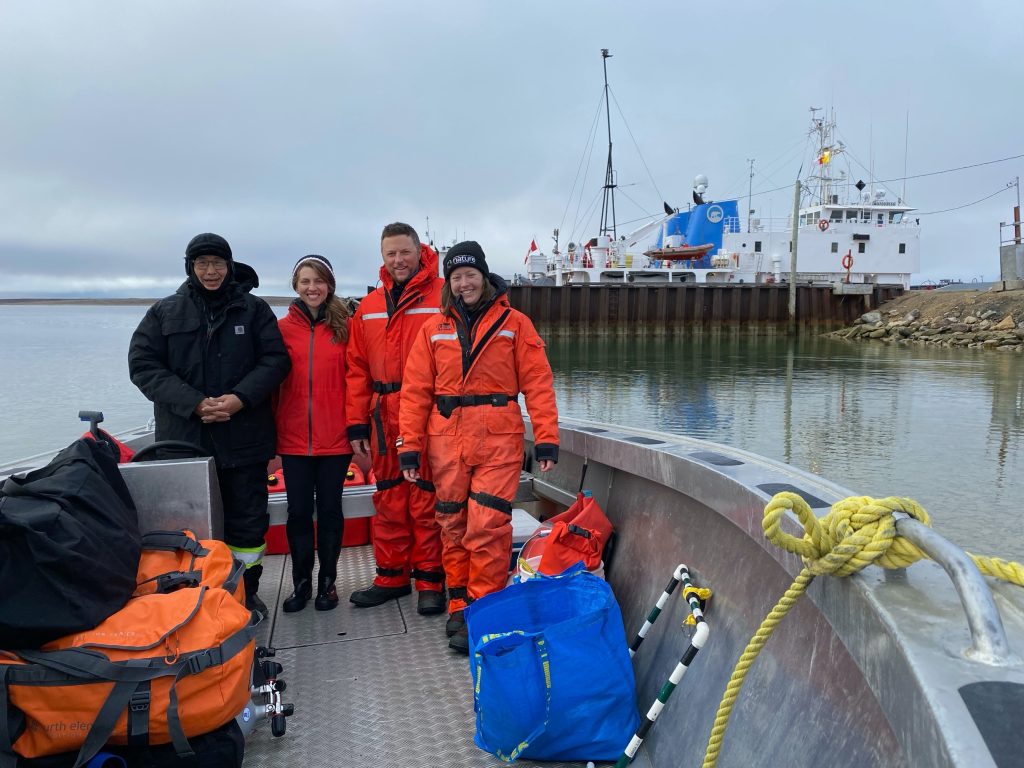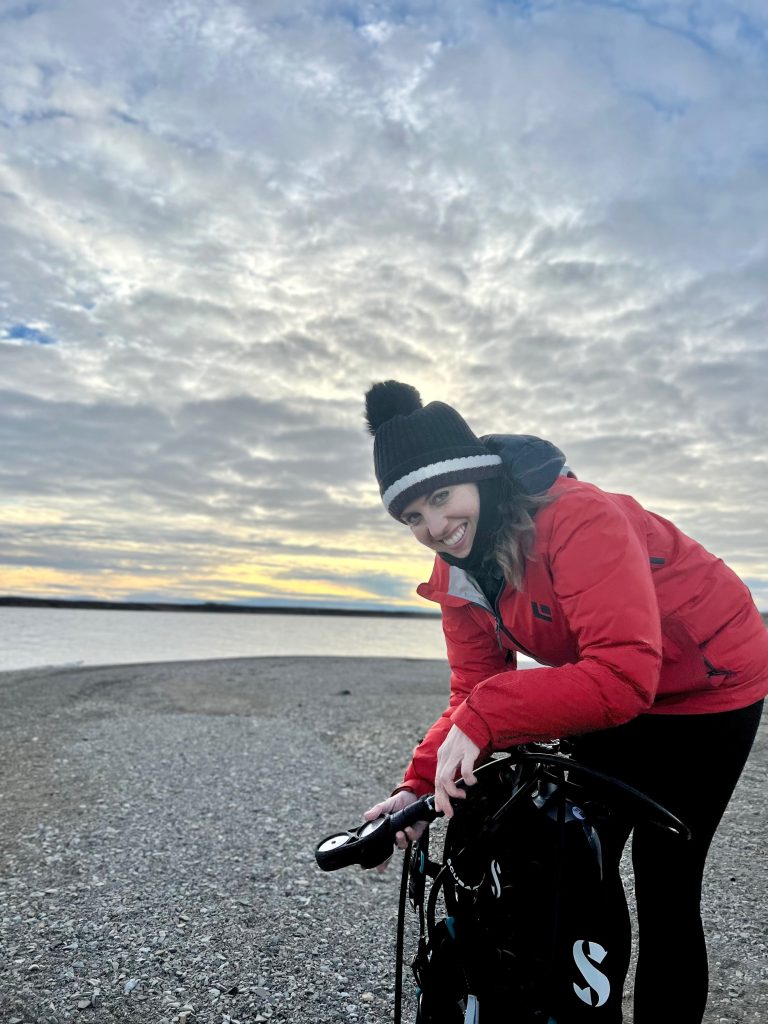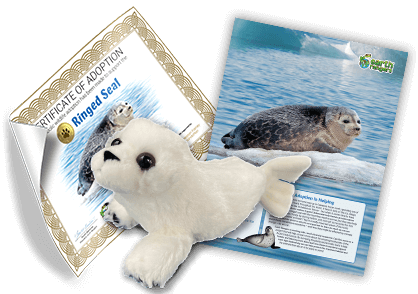Dear Earth Rangers,
The last months have been very busy on my side! Last time I wrote you, I was back from Norway, for an international workshop on kelp forest ecosystem services, and now I am back from the field, where I spent a month in total in Cambridge Bay, and 2 weeks in Iqaluit.

In Cambridge Bay, our work consisted mostly of daily dives – from the shore or from a boat – to explore, map and sample invertebrates, kelp and seaweed diversity at different sites. I worked in collaboration with two scientists from the Museum of Nature – teamwork makes the dream work!
We visited more than 20 different sites in the Cambridge Bay area and used underwater cameras (to scout the shorelines) and satellite images, along with our dives, to measure things like salinity (that’s a measure of how salty the water is!), water temperature, and depth. We dove between 5 to 15 meters to make our collections and spent between 8-12 hours per day on the boat when the winds were favorable. Check out some of the amazing marine life we spotted!
Diving in the Arctic is very challenging; you have to face freezing temperatures both inside and outside the water. In September, the water around Cambridge Bay is between 1 and 4 °C, while the air is between -1 and 5 °C. In such, we had to be very well equipped both for diving and for the long hours of steaming, out in an open aluminum boat!

My personal dive gear consists of a drysuit, in thick neoprene, that has two valves, one to fill the suit with air, which keeps me warm as I go deeper, and one to empty the air, which helps control my buoyancy. I also have a vest, called a BCD, that I use mainly as a lifejacket and as a backpack to carry the air tank. One of my most precious piece of equipment is a regulator. It connects the air tank to my mouth, my BCD and my drysuit, and it must never freeze! On the pictures you can also see my dive computer that records all the precious information related to my dives – date, depth, duration, temperature -, and my special fins, that are weighted to keep my feet lower than my body as I swim. Most of the dive equipment is extremely heavy, because it’s so hard to go down in the water with so much volume. In such, if you have to wear extra layers to face the cold… you will also need to add more lead weights in your pockets to go down! I always carry 34lbs of lead with me on the field…
I could tell you a lot about my amazing dive experiences in Cambridge Bay but I think that the videos will talk for themselves. The water there is as clear as in the Caribbean, although the seascape often looks more like the Moon’s surface, or Mars, because everywhere is so barren, and so impacted by ice-scouring. At some of the sites – especially where the satellite images revealed ice-free areas during early spring – we found some precious kelp beds, acting as oasis of life. That’s also where I had a very special encounter with an Ugyuk, a Bearded seal!
The second round of field work took place in Iqaluit, where we used bait cameras (BRUVS) to study organisms like fish and tall invertebrates (crabs, gastropods) that move around a LOT. Bait cameras are made with an aluminum frame that stays in an upward position in the water; on one end there is a bait (very oily sardine), and on the other, a waterproof camera. We can deploy as many as 24 cameras per day, and have them film for over two hours. In total we have as much as 240 hours of footage to watch; this means a lot of popcorn! This stretch of work was very intense as we spent 12 hours on the boat each day, deploying bait cameras and also scouting the different habitats & depths with a Seaviewer (live feed underwater camera), but it was also a lot of fun, because our Inuit guides were very knowledgeable, chatty and also extremely funny! The best surprise that we had in Iqaluit was to discover the amount of kelp there. Kelp is everywhere; the forests are so dense you cannot see the substrate, and so high, it seems like an underwater Arctic… rainforest.
Meanwhile, I want to thank you Earth Rangers, sincerely, for providing precious research funds. I used it mainly to buy all the necessary equipment for my Arctic dives, and also for our Inuit boat guide, that took us out for the invertebrate collections we needed at the school and at CHARS for our presentations. Thank you for encouraging ArcticKelp!

Don’t forget that you can help support this important research with a Ringed Seal Adoption Kit, available through the App or E-Store today!



Wow that is so interesting I might adopt one
How does the marine life in Cambridge Bay survive in the freezing cold tempature?
I really love this app its so fun and we get to learn about animals we can’t adopt them we can even learn about the animals and guess what I really love this app so bad
Awsome
That is incredible!
Wow that is so cool and awesome!